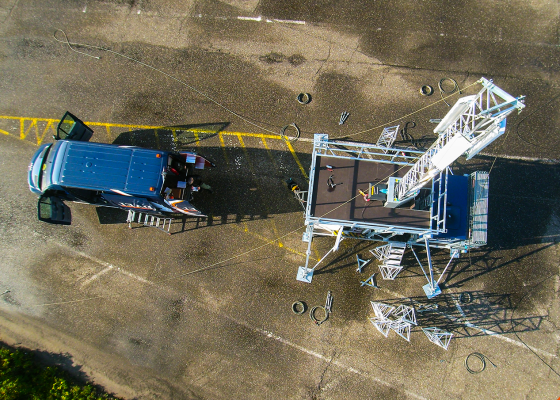CO2 Emission results 2016 - 2017
Thursday 4 May 2017
DAEL Group aims to reduce the C02 emissions of the company by 10% in 2019, with 2014 as the base year. The results of this objective are measured on a yearly base. This article contains more information about the the emission results in 2016 - 2017.
Development and progress of the CO2 reduction in 2016
UPDATE (26-4-2017) We are proud to announce that we once again have successfully completed the CO2 Performance Ladder certification and reached the highest maturity level [5].
DAEL Group aims to reduce the C02 emissions of the company by 10% in 2019, with 2014 as the base year. The results of this objective are related to turnover and will be divided into three types of scopes.
Scope 1: Direct targets for fuel and gas
Scope 2: Electricity consumption and air travel
Scope 3: Use of paper materials and garbage disposal
The results of the emission inventory for 2016 are shown below in both numbers and pie charts.
Table 1: Emission inventory CO2 emissions for DAEL in 2016
The proportion of each type of emission, compared to total emissions, are visualised using pie charts. Percentual savings on the larger parts of the pie charts are more effective for the net results.
Pie chart 1: CO2 emissions by DAEL in 2016 within Scope 1
Pie chart 2: CO2 emissions by DAEL in 2016 within Scope 2
Pie chart 3: CO2 emissions by DAEL in 2016 within Scope 3
Pie chart 4: CO2 emissions by DAEL in 2016 with Scope 1 & 2 combined
Preliminary conclusions
Last year, the CO2 emissions of the DAEL Group car fleet dropped to 267 grams of CO2/Km. Compared to the 269 grams of CO2/Km in the reference year (2014), this means a CO2 reduction of 1%. This result has been achieved with the implementation of a communication plan for all employees to increase awareness about emissions. This plan informed employees on checking tyre pressure monthly and how to drive in an efficient and safe manner. Also, the replacement of older buses further reduced car fleet emissions. We expect that there is still improvement possible for employees to drive more fuel efficient. Increasing employee awareness on this matter could possibly result in even lower emissions.
DAEL reduced its CO2 emissions from using energy (gas) at its offices by 8%*
*CO2 emissions are related to power consumption based on weather conditions per day
Last year, the gas consumption of our office buildings dropped from 0,014 to 0,013 tonnes of CO2 per day (based on weather conditions). This is a decrease of 3% which is a result from minor changes in the climate system dynamics. In addition, improved isolation has been placed on one of the office locations and multiple boilers have been replaced for high-efficiency boilers. With increased employee awareness it is possible to achieve even greater reduction in the near future.
DAEL reduced its CO2 emissions from the use of electricity in its offices by 10%*
*CO2 emissions are related to total FTE
In the past year CO2 emissions from the use of power in our offices were significantly lower. The final result for 2016 is a reduction of 27%. None of the DAEL buildings have been restructured which means that the ratio can be omitted and be replaced as a steady factor. In that case, the net reduction will be 25%. The reason for this reduction is the execution of an action plan which considers solar panels and conscious use of appliances. By turning off all systems which are not being used (computers, screens, printers etc.), further reduction of CO2 is possible. Also a closure round by the last person in the building each day will further decrease unnecessary power use.
More information and specified documents can be found in our CO2 Performance ladder ambitions.
If you have any suggestions to further reduce our CO2- emissions, please contact us.





